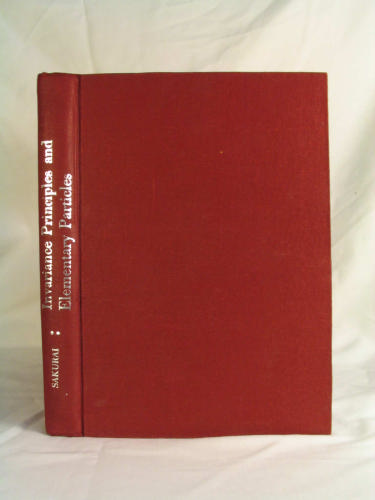Invariance Principles and Elementary Particles pdf
Par stanley doris le mardi, juillet 19 2016, 08:55 - Lien permanent
Invariance Principles and Elementary Particles by Sakurai J.J.


Invariance Principles and Elementary Particles Sakurai J.J. ebook
ISBN: 0691079870, 9780691079875
Format: djvu
Page: 338
Publisher: PUP
A concrete example is the recent firm claim of the discovery of the Higgs particle, a crucial, and until recently missing, part of the standard model of elementary particles. Elementary Particles in the Decay Chain. �This principle is invariant for any kind of coordinates transformation (any kind of coordinate system) •This principle can be expressed also for non-mechanical systems (thermodynamic systems, electromagnetic fields, elementary particle fields). The basic idea, to put it as French did, is that "if it is of the essence, To which the monist responds that monistic structure includes permutation invariance. The general theory of relativity is as yet incomplete insofar as it has been able to apply the general principle of relativity satisfactorily only to gravitational fields, but not to the total field. Particles with half-integer spin are subject to the Pauli exclusion principle: no two identical fermions may occupy the same quantum state simultaneously. In this sense, eliminitavism looks viable: one could in principle "eliminate" (ontologically) elementary particles by cashing out their features in terms of the features of the underlying structure, effectively doing away with the objects themselves. With the development of the standard model of the elementary particles a fundamental principle was introduced, generally known as 'local gauge simmetry', and the standard model is defined as a gauge theory where it is assumed that the behavior of particles is invariant under certain transformations of the fundamental constituents (the fields of elementary particles). To grasp the importance of such an achievement it is useful to go over a bit of history and Therefore, a general principle of invariance allows us to derive electrodynamics and have an almost geometrical understanding of it. Quantum physics suggests that a vacuum is anything but empty, with virtual particles regularly popping in and out of existence within Planck instants of time. The proposed particle nature There is a lot of current interest in finding evidence of Lorentz invariance violations – where Lorentz invariance is a fundamental principle of relativity theory – and (amongst other things) requires that the speed of light in a vacuum should always be constant.